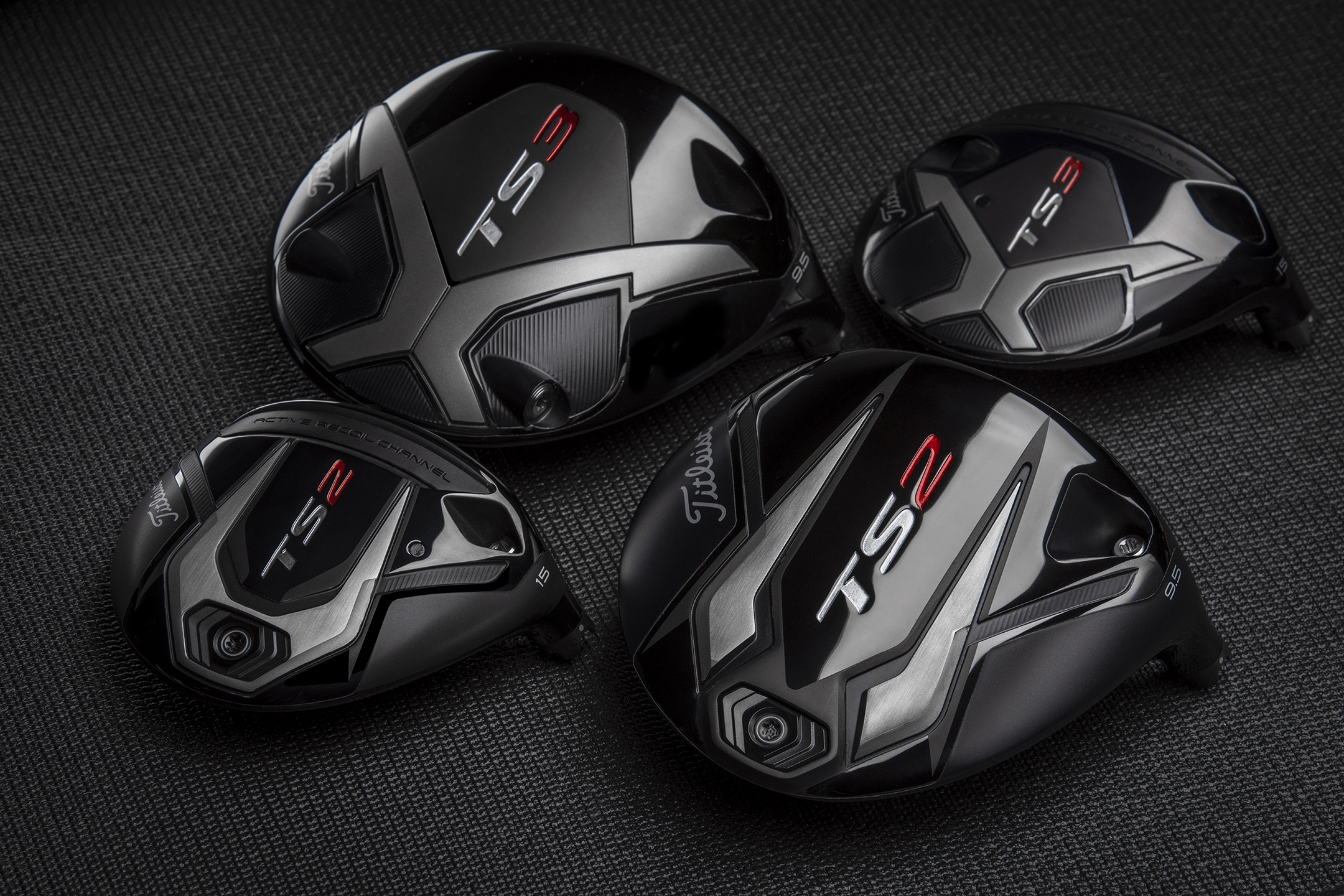When the Titleist 917 drivers were delivered to the head pro at my golf club, a number of us went to the driving range with a fitting kit and launch monitor to see how they stacked up to what we were all using at the moment. At the time, I was using Cobra's King LTD driver, which was a spin-killing distance machine. So the 917 was facing stiff competition.
The 917 never stood a chance. I tried several different shafts, various SureFit CG options and a few other adjustments, and the drivers just couldn't compete on spin or distance. The fairway woods were unbelievable, but the driver just wasn't happening.
Titleist knows I'm not the only person to go through such an experience with the 917 line. Plenty of golfers won't even tinker with options when trying out a new club. It works in their hands, the first time, or it doesn't and it's thrown to the discard pile. That's why Titleist threw the kitchen sink at the problem for their new driver series. They wanted to do everything they could to come up with higher ball speeds, lower spin, better launch angles and, therefore, more distance. What they came up with is the new Titleist Speed (TS) series, with two drivers designed to compete against their peers right out the gate.
The Titleist Speed project was a two-year effort to figure out what was holding them back in the driver market, with rapid prototyping and testing to discern which features worked and what didn't in achieving their performance goals.
In the end, they settled on three big choices:
- They went a half-inch longer with the stock driver shaft, to the 45.5-inch shaft you see in most other major manufacturers' drivers.
- They decided against using carbon fiber in their crown, believing the tacked-on weight from welding the carbon fiber to titanium meant diminished performance compared to an all-titanium head.
- They made one driver -- TS3 -- which is fully adjustable on the sole and the other -- TS2 -- with no center-of-gravity adjustment.
- They maintained the SureFit hosel, with 16 different loft and lie adjustments.
The cast titanium crown is 20 percent thinner than the 917 line (going from 0.5 mm to 0.4 mm, which is a big achievement), so weight could be shifted lower and deeper with the optimal center-of-gravity placement. A big shift in CG means, as you know, higher launch and lower spin. The crown weight savings allowed engineers to move weight elsewhere to increase MOI, getting a rating of near 9,000, which is at the high end in the current market.
The thinner face is so thin, the scoring lines have to be lasered on, as opposed to being etched. Variable face thickness is common on drivers, but Titleist continued pushing theirs to the limit, saving 6 grams in the process. The total head design, particularly the face and crown, is dubbed the Titleist Speed Chassis. Titleist eliminated the Active Recoil Channel from their drivers, figuring out other ways to gain past its ball speed and forgiveness features.
The TS2 driver is designed to look more like the modern driver head: shallower face, with a deeper overall footprint and profile in a 460cc head. That means higher MOI and across-the-face forgiveness compared to the TS3. The TS2 launches higher and spins lower. It has a fixed center-of-gravity, but a weight in the back of the sole can be adjusted to change the total swingweight. The TS2 is available in 8.5-, 9.5-, 10.5- and 11.5-degree heads.
The TS3 driver looks more classic in shaping: deeper face, more compact overall profile but still in a 460cc head. SureFit CG adjustability is on this product, as well the fully adjustable hosel. The TS3 has a little more forward profile in terms of center of gravity, with a mid-height launch with low spin. The TS3 is available in 8.5-, 9.5- and 10.5-degree heads.
The TS drivers have a number of aftermarket stock shaft options, including the Mitsubishi Kuro Kage Black Dual Core 50, Mitsubishi Tensei AV Series Blue 55, HZRDUS Smoke Black 60 and Even Flow T1100 White 65. These are all-new shafts, hitting the market with the TS series.
The Titleist TS2 and TS3 drivers are available for purchase Sept. 28 for $500 each.

Titleist TS2 and TS3 fairway woods
For consistency's sake, Titleist carried through the TS2 and TS3 nomenclature and differences into the fairway woods segment. The TS2 is promoted as the company's longest-ever fairway wood, while the TS3 has more adjustability to dial in distance and control.
On both fairway woods, the crown has been made 27 percent thinner, with a thinner VFT face. The end result is a lower center of gravity for higher launch and lower spin. The MOI is up 11 percent over the prior generation. And I loved the 917 fairway woods.
While the Active Recoil Channel is gone from the TS2/TS3 driver, it remains in the fairway woods in a new iteration. It's been blended into the Speed Chassis, with a taller design than the prior generation for more face flexibility. The ARC is there primarily to help on shots where the fairway woods are hit off the turf or low on the face.
The TS2 fairway wood has a deeper profile and a fixed center of gravity, designed for higher launch and mid spin in a 175 cc package. It's available in 13.5-, 15-, 16.5-, 18- and 21-degree heads.
The TS3 fairway wood has a traditional deeper look, with SureFit CG adjustment, designed for mid launch and low spin in a 175 cc package. It's available in 13.5-, 15-, 16.5- and 18-degree heads.
The TS drivers have a number of aftermarket stock shaft options, including the Mitsubishi Kuro Kage Black Dual Core 55, Mitsubishi Tensei AV Series Blue 65, HZRDUS Smoke Black 70 and Even Flow T1100 White 75. These are all-new shafts, hitting the market with the TS series.
The Titleist TS2 and TS3 fairway woods are available for purchase Sept. 28 for $300 each.

